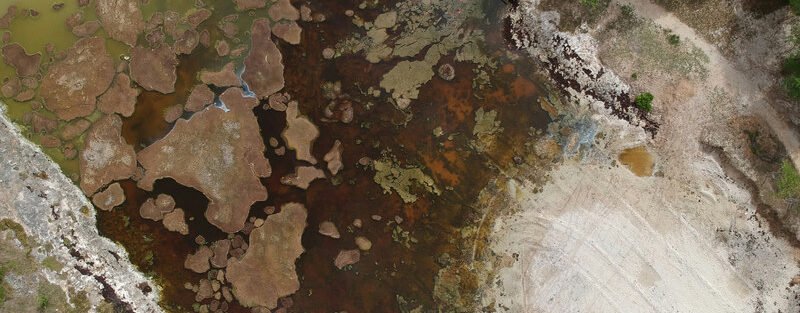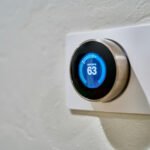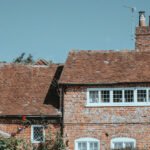Popular methods of mould removal
Humid climates and poor indoor ventilation often lead to mold growth, which is a common problem in homes around the world, including England. Not only does mold spoil the appearance of a room, but it can also negatively affect people’s health, causing allergies and respiratory diseases. Let’s look at popular mold removal methods, their advantages and disadvantages.
1. Vinegar
Description: Vinegar is a natural acidic solution that effectively fights mold. It is often used as an affordable and safe way to remove fungus in the home. Pros:- Natural and safe: vinegar is safe for health, does not contain chemicals, and can be used in rooms where children and pets are.
- Effective against most types of mold: the acid in vinegar destroys mold cells, preventing its further growth.
- Availability: vinegar is easy to find in any store, and it is inexpensive.
- Smell: Vinegar has a strong odor that can linger in a room for some time after it has been used.
- Limited effectiveness on tough stains: Vinegar may not be able to remove deep, old mold, especially on porous materials.
2. Hydrogen Peroxide
Description: Hydrogen peroxide (3%) is a powerful antiseptic that kills fungi, bacteria, and mold spores. It is used to clean small to medium stains. Pros:- Antibacterial properties: Hydrogen peroxide not only fights mold, but also kills bacteria, making it ideal for use in bathrooms and kitchens.
- Eco-friendly: It is a safe product that does not release harmful chemicals into the environment.
- Effective on various surfaces: Peroxide can be used to remove mold from both hard and porous surfaces.
- Destructive to some materials: Peroxide can discolor fabrics or surfaces, so it is necessary to test it on an inconspicuous area first.
- Limited effectiveness on large areas: Like vinegar, hydrogen peroxide may not be effective against mold in large or heavily infested areas.
3. Chlorine Bleach
Description: Chlorine bleach is one of the most popular mold removers, especially on hard and smooth surfaces. It actively fights mold by killing the fungus and removing stains. Pros:- Fast and powerful: Chlorine bleach quickly destroys mold and mildew, and helps remove stains from surfaces.
- Suitable for hard surfaces: Works well on tiles, ceramics, glass, and metal.
- Disinfection properties: In addition to mold, bleach kills other germs and bacteria.
- Toxicity: Chlorine bleach produces harsh fumes that can be hazardous to your health if inhaled. Good ventilation is required when using it.
- Not suitable for porous materials: On porous surfaces, bleach may not penetrate deeply enough and leave the roots of the mold intact, causing it to grow back.
- Discoloration: Bleach can damage or discolor fabrics, wood surfaces, and some types of paint.
4. Baking Soda
Description: Baking soda is another natural mold remover. It is safe to use at home and is often used in combination with other methods, such as vinegar. Pros:- Eco-friendly: Baking soda is completely safe for people and pets and can be used in any room.
- Prevention: Baking soda not only removes mold, but also helps prevent it from coming back by leaving an alkaline residue on the surface.
- Availability: Baking soda is inexpensive and widely available.
- Limited effectiveness: While baking soda is effective against small mold spots, it may not be strong enough for larger infestations.
- Requires frequent application: Multiple applications may be required to achieve long-term results.
5. Specialized Antifungal Agents
Description: There are many specialized mold removers on the market that contain powerful chemical compounds aimed at fighting fungus. These agents can be liquid, aerosol, or powder. Pros:- High efficiency: Professional products are able to destroy mold in the most difficult to reach areas, including deep porous surfaces.
- Versatility: Many antifungal agents are suitable for various materials and surfaces, from walls to wood and fabrics.
- Preventive action: Some products not only remove mold, but also create a protective layer that prevents its reappearance.
- High cost: Specialized products can be more expensive compared to home solutions.
- Toxicity: Many chemicals emit harmful fumes and require the use of protective equipment such as gloves and masks.
- Possibility of damage to materials: Some aggressive compounds can damage delicate surfaces and cause discoloration.
6. Professional Cleaning
Description: When mold affects large areas or penetrates deep into materials, professional help may be required. Mold removal specialists use sophisticated technology and safe chemicals to remove the fungus. Pros:- Guaranteed removal: Professional cleaning can completely eliminate mold, even in the most difficult cases.
- Use of specialized equipment: In some cases, ultrasonic cleaners, ozonizers, and other products that are not available for household use may be used.
- Safety: Professionals use proven methods that minimize the risk of recurrence and damage to the building.
- High cost: Professional services can be expensive, especially for large affected areas.
- Time-dependent: Cleaning may take several days and require temporary eviction of residents.


